Abstract
Contingencies studied in lever-pressing procedures were incorporated into a popular computer game, "Star Trek," played by college students. One putative reinforcer, the opportunity to destroy Klingon invaders, was scheduled independently of responding according to a variable-time schedule that alternated unpredictably with equal periods of Klingon unavailability (mixed variable time, extinction schedule of reinforcement). Two commands ("observing responses") each produced stimuli that were either correlated or uncorrelated with the two components. In several variations of the basic game, an S-, or bad news, was not as reinforcing as an S+, or good news. In addition, in other conditions for the same subjects observing responses were not maintained better by bad news than by an uninformative stimulus. In both choices, more observing tended to be maintained by an S- for response-independent Klingons when its information could be (and was) used to advantage with respect to other types of reinforcement in the situation (Parts 1 and 2) than when the information could not be so used (Part 3). The findings favor the conditioned reinforcement hypothesis of observing behavior over the uncertainty-reduction hypothesis. This extends research to a more natural setting and to multialternative concurrent schedules of events of seemingly intrinsic value.
Full text
PDF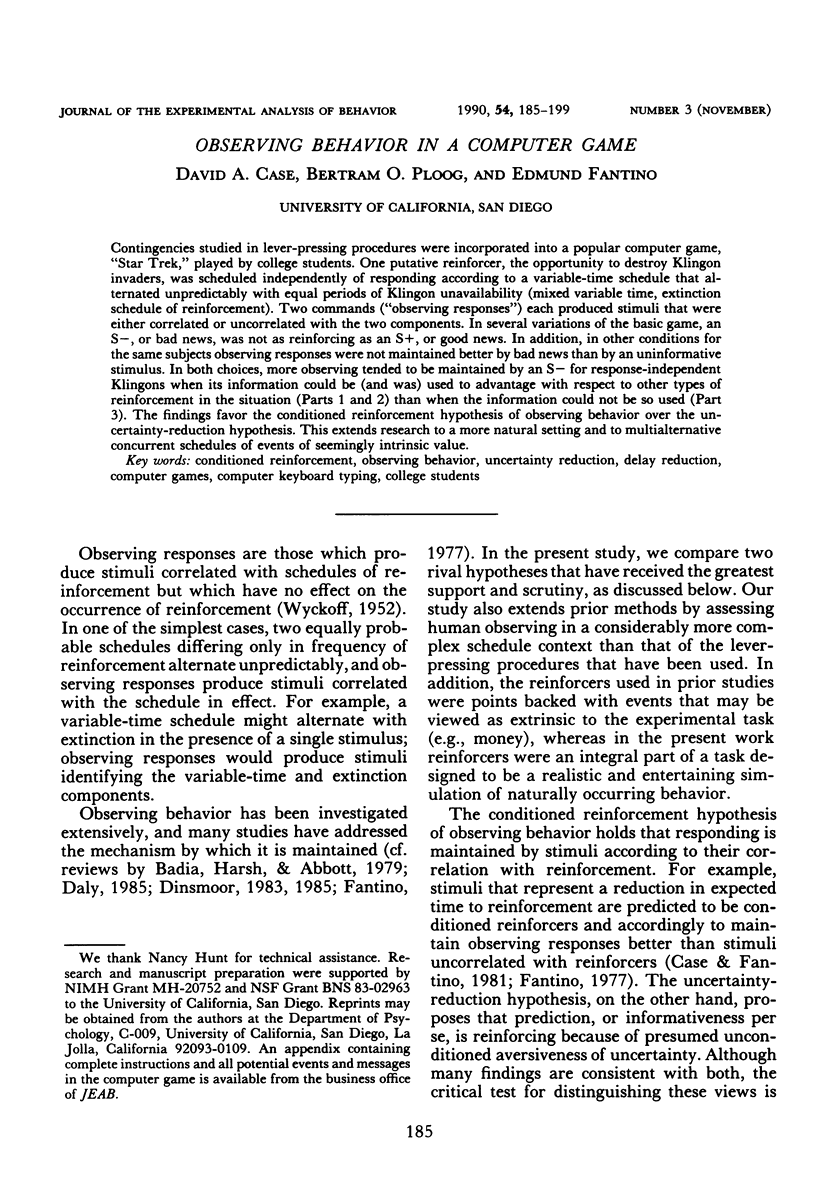
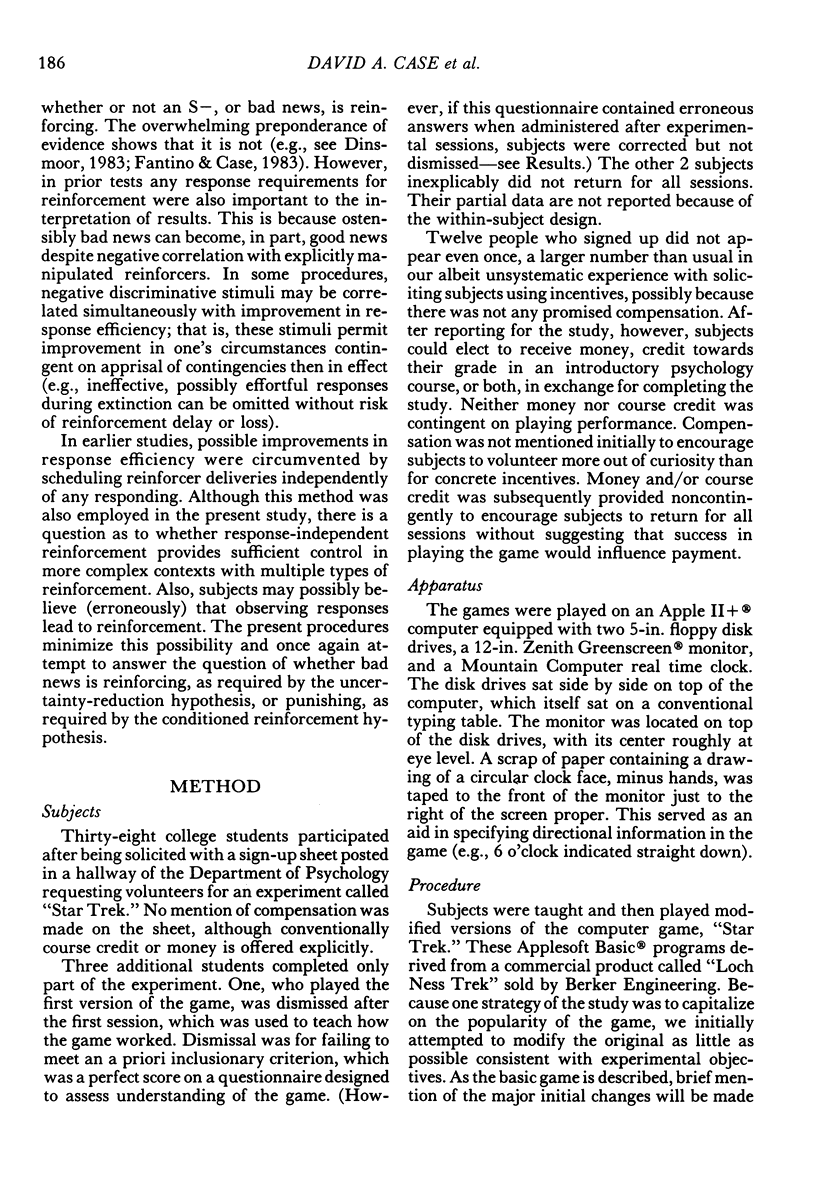
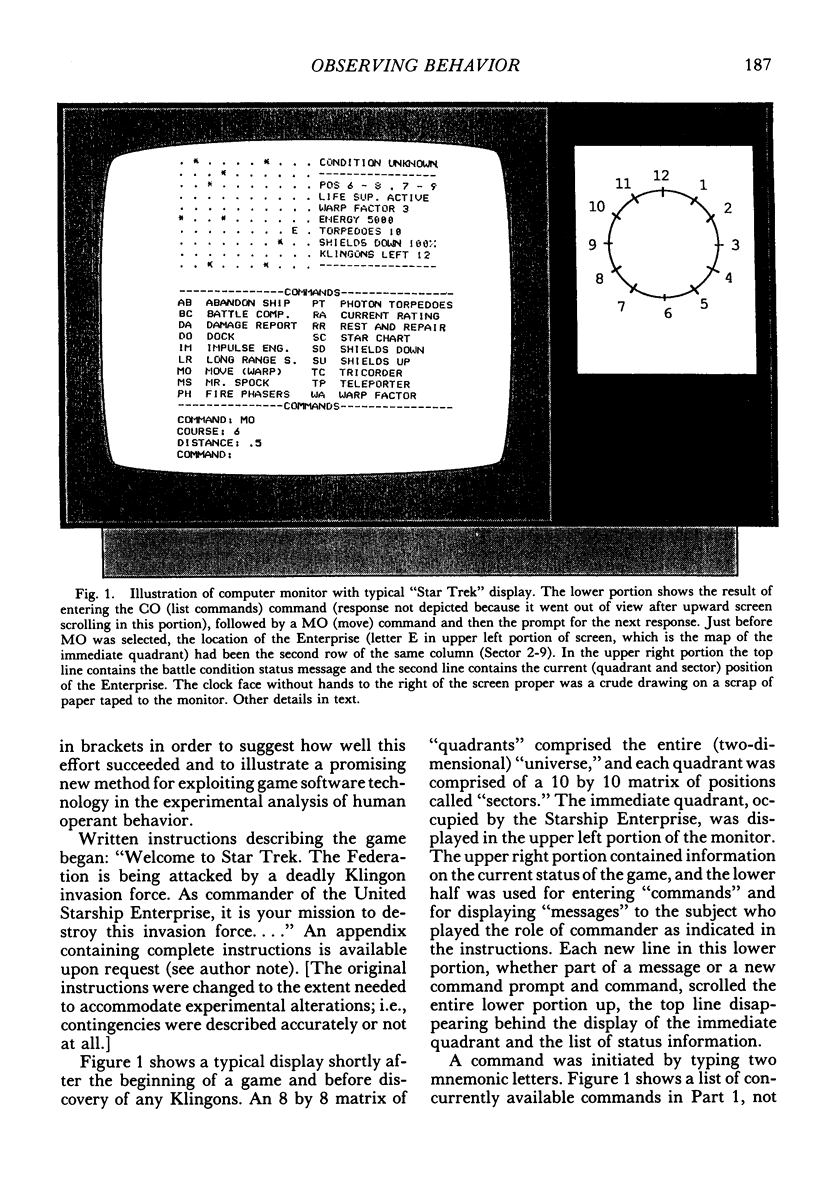
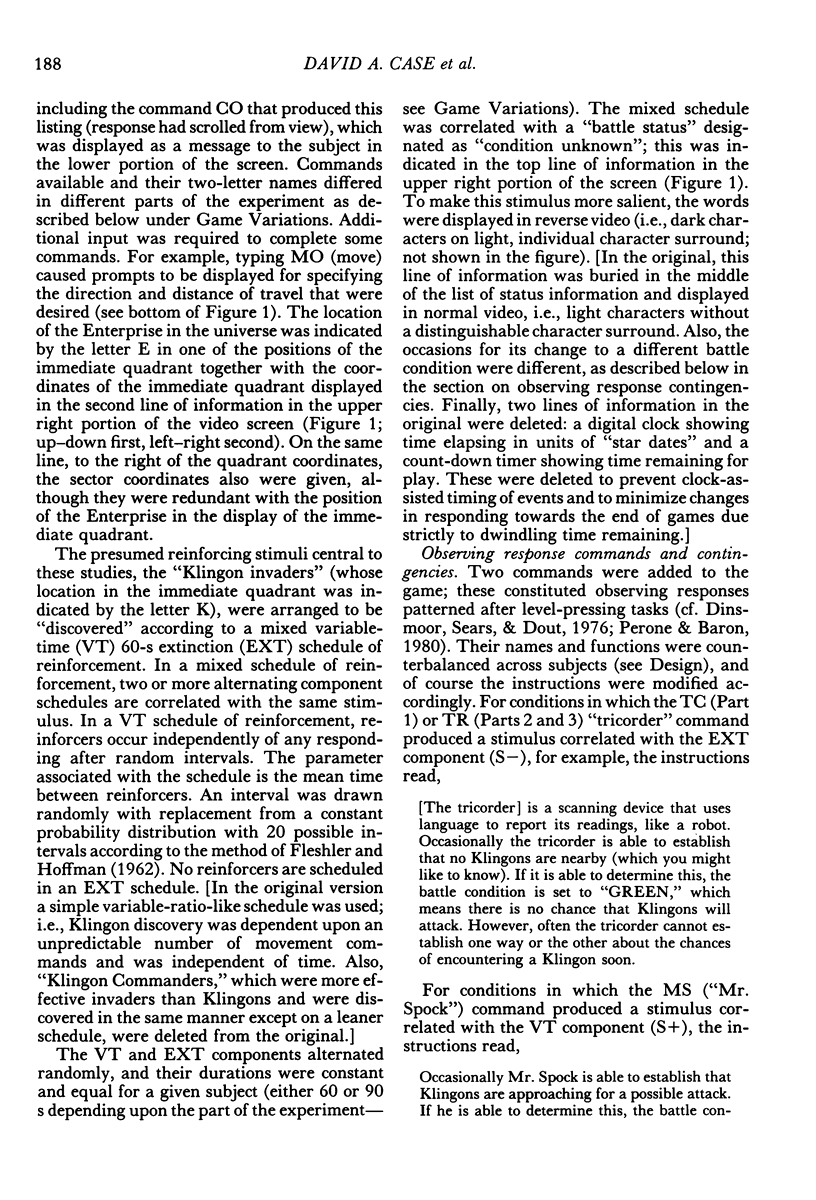
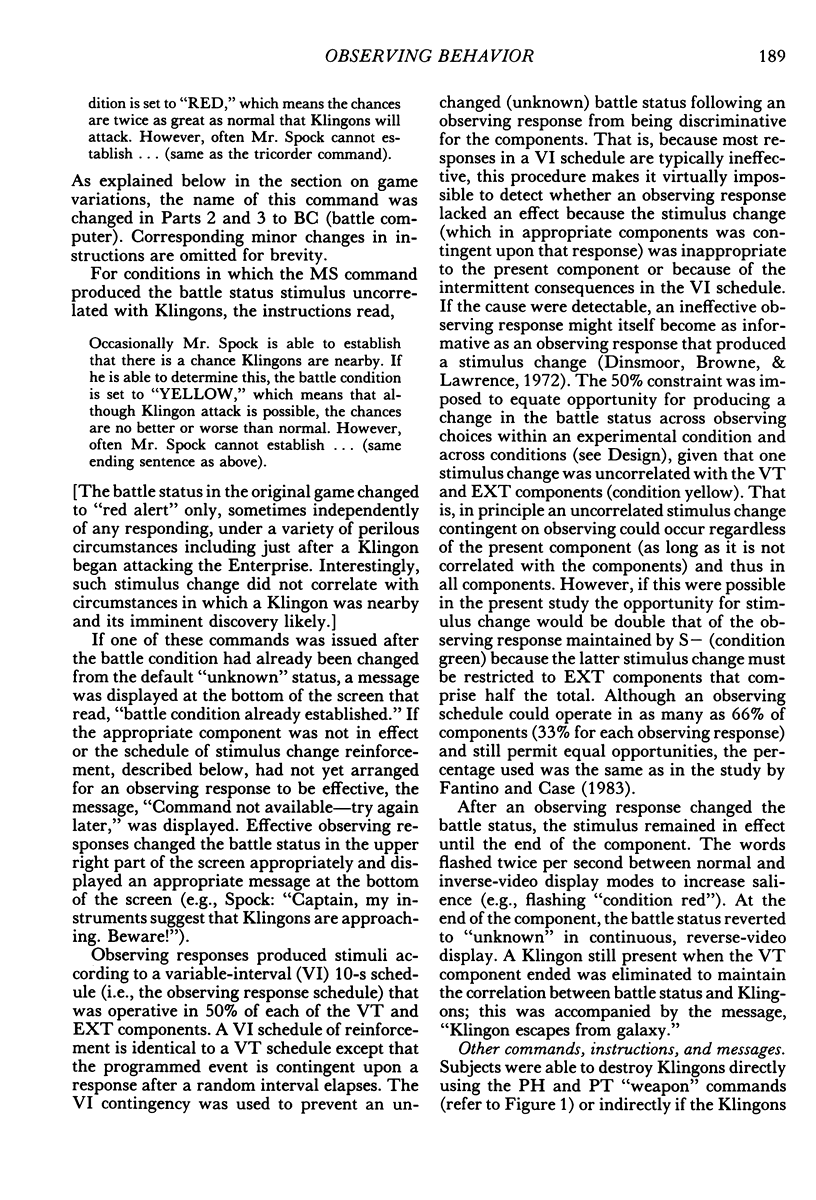
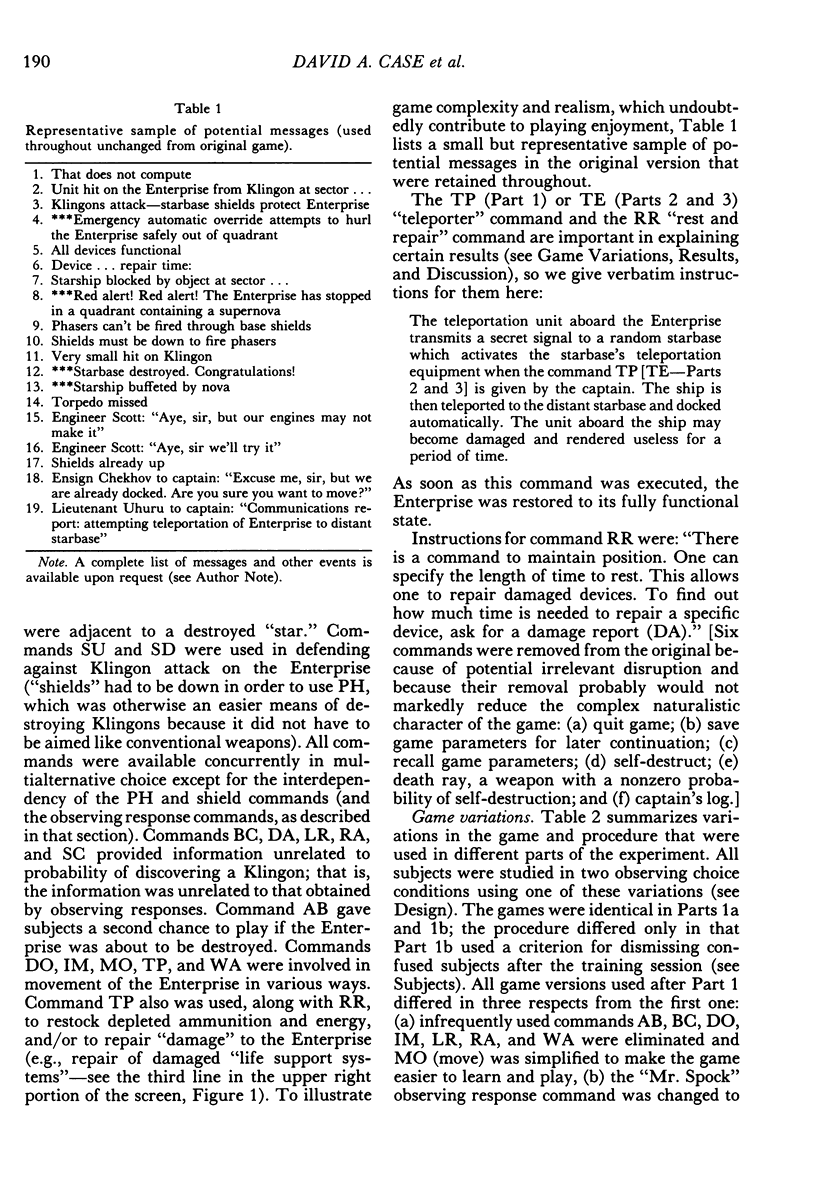
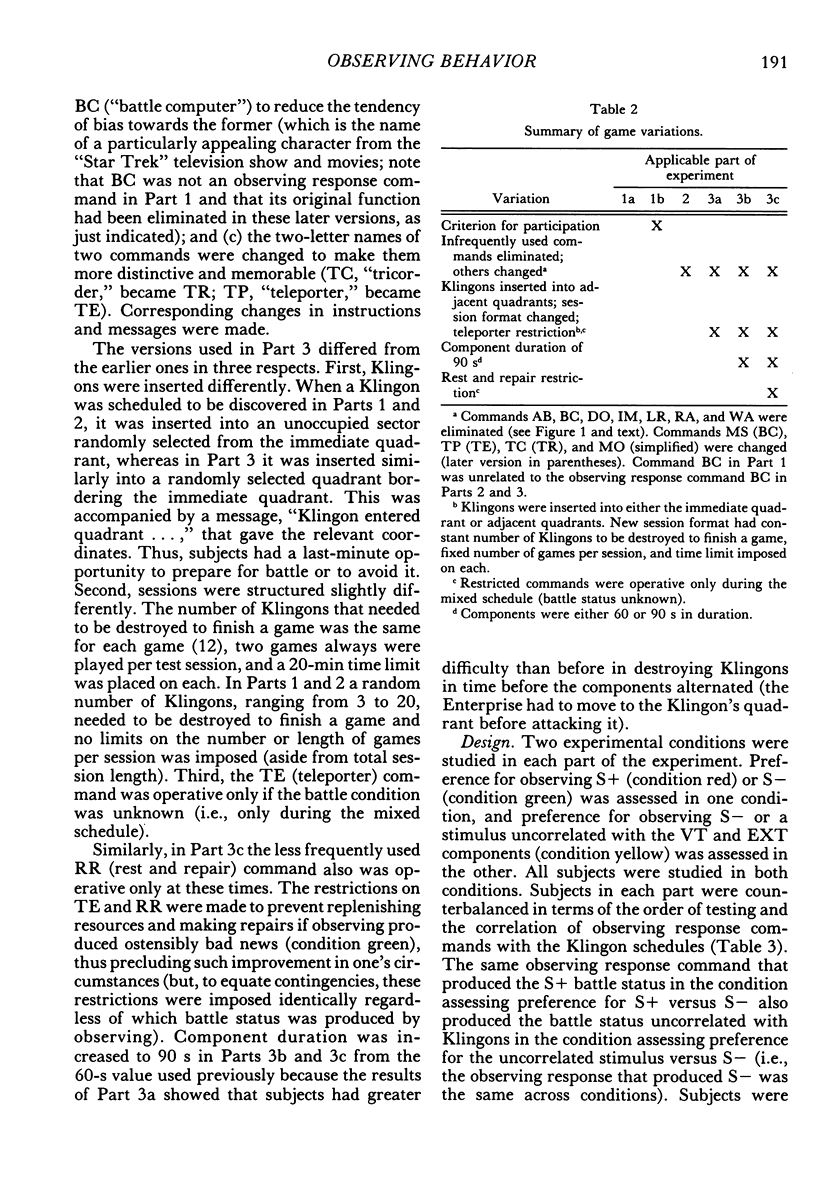
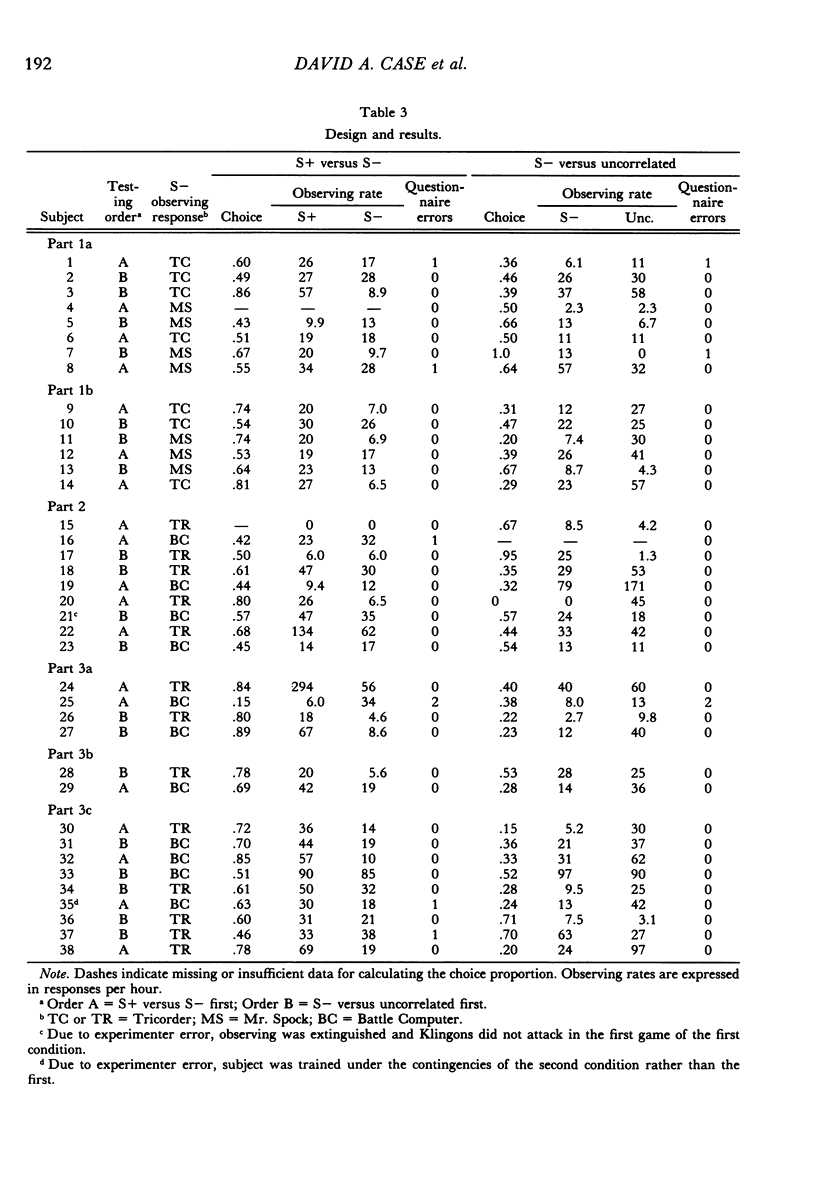
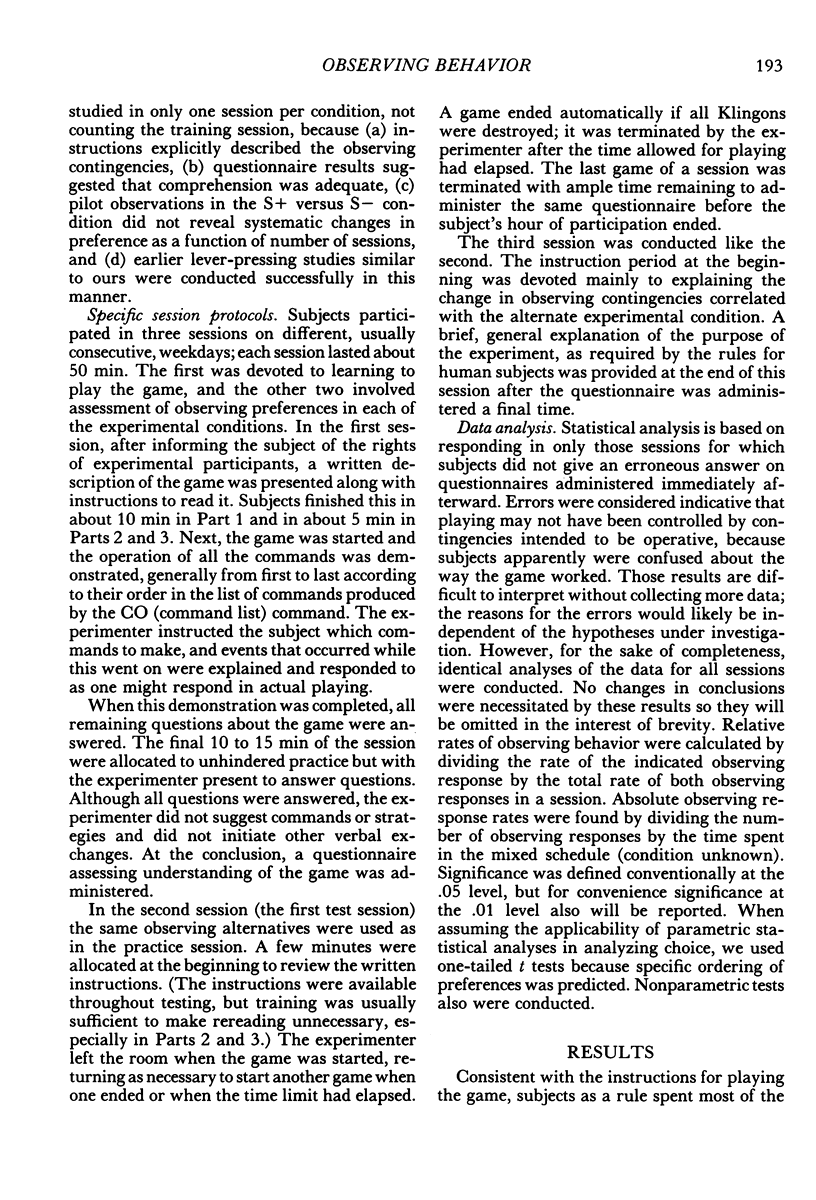
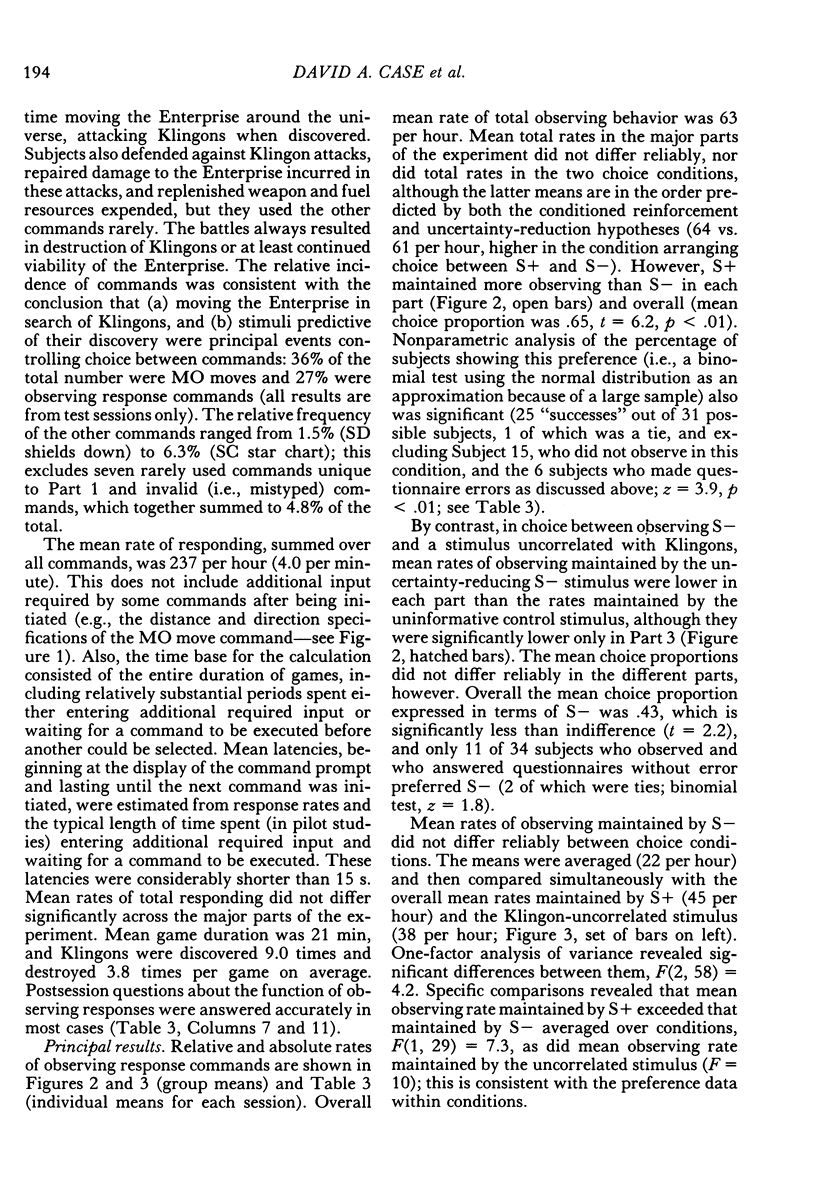
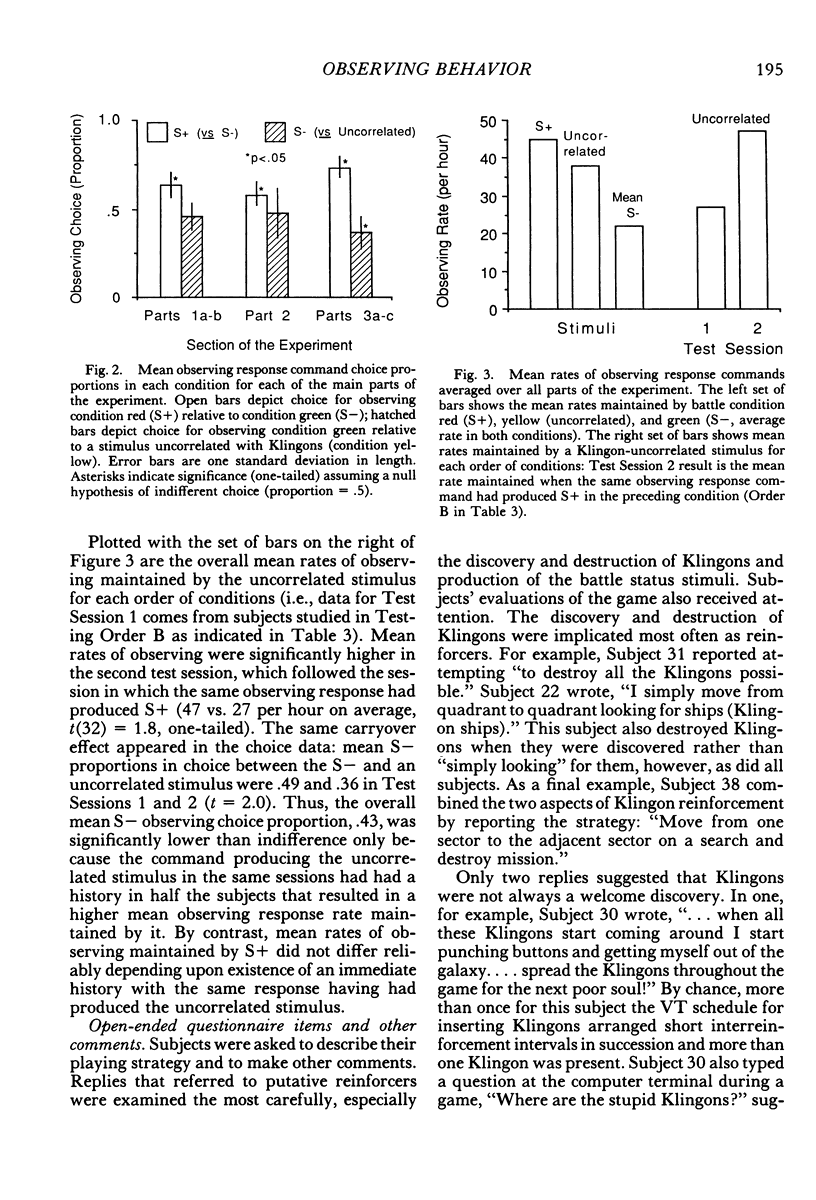
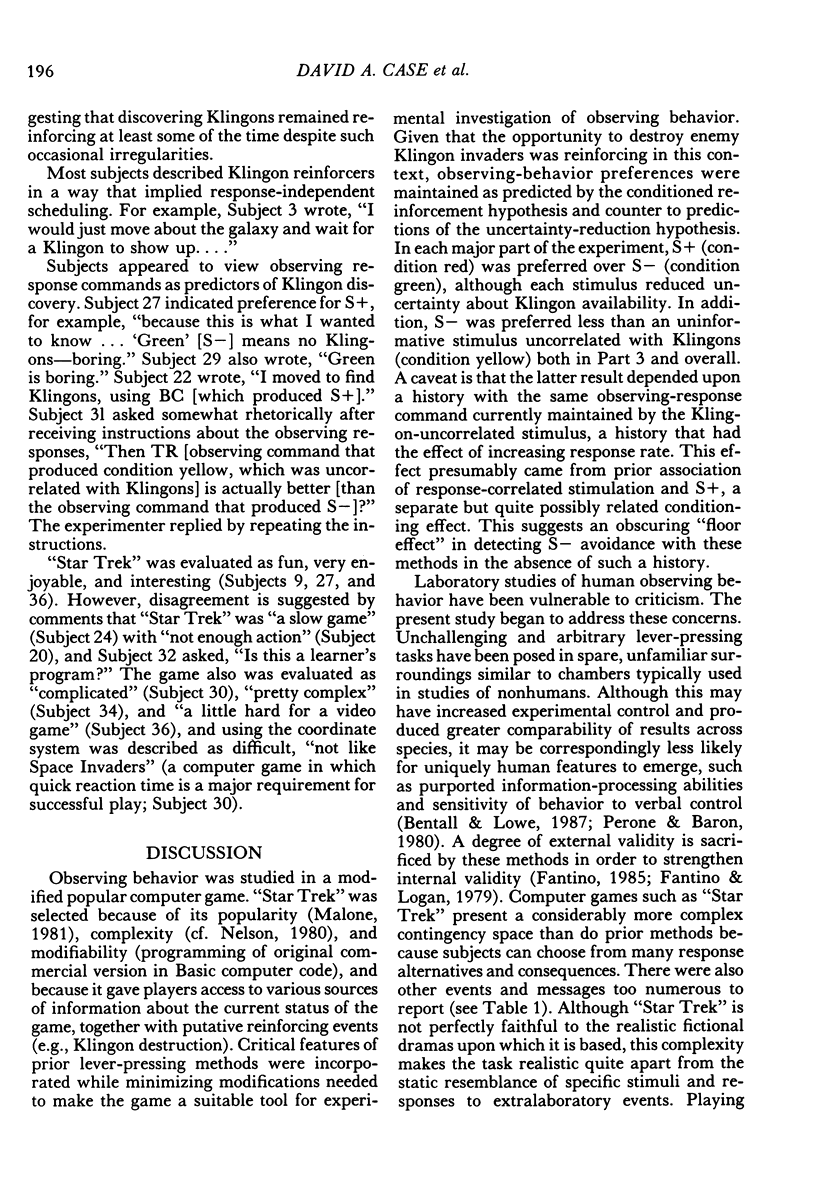
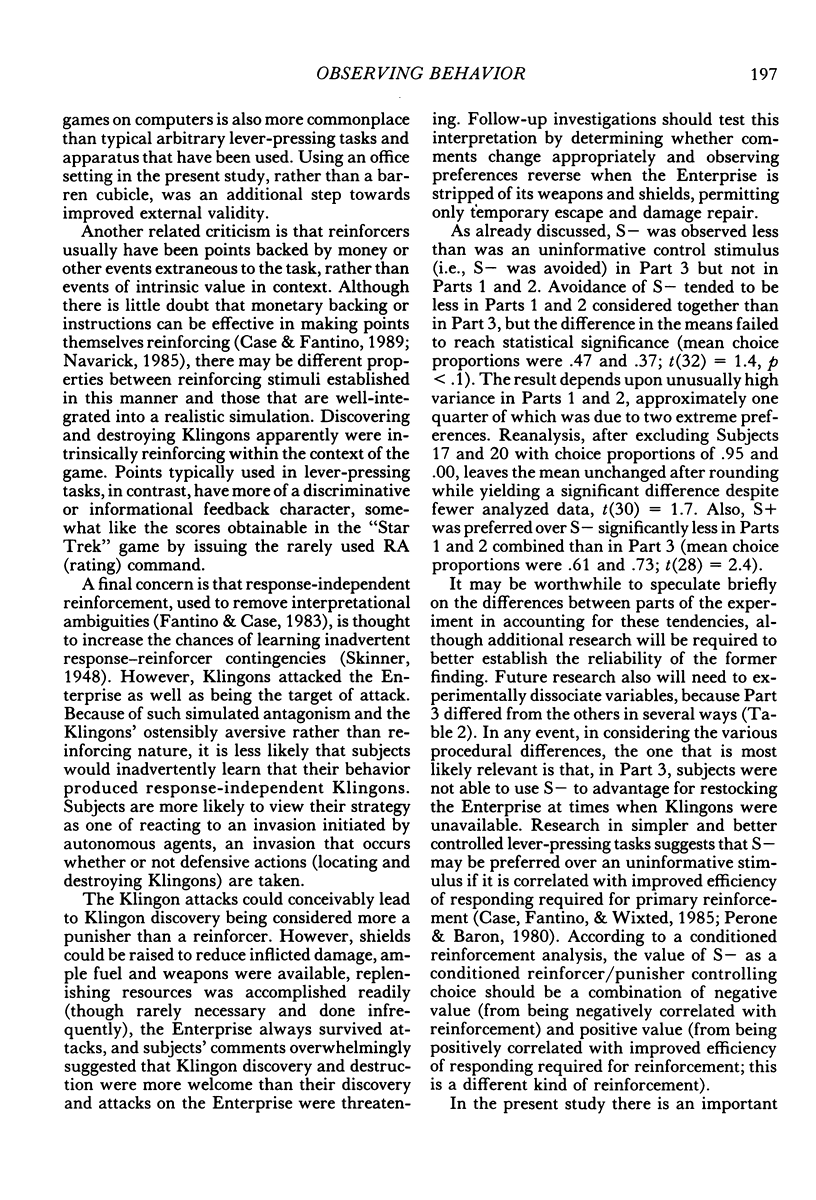
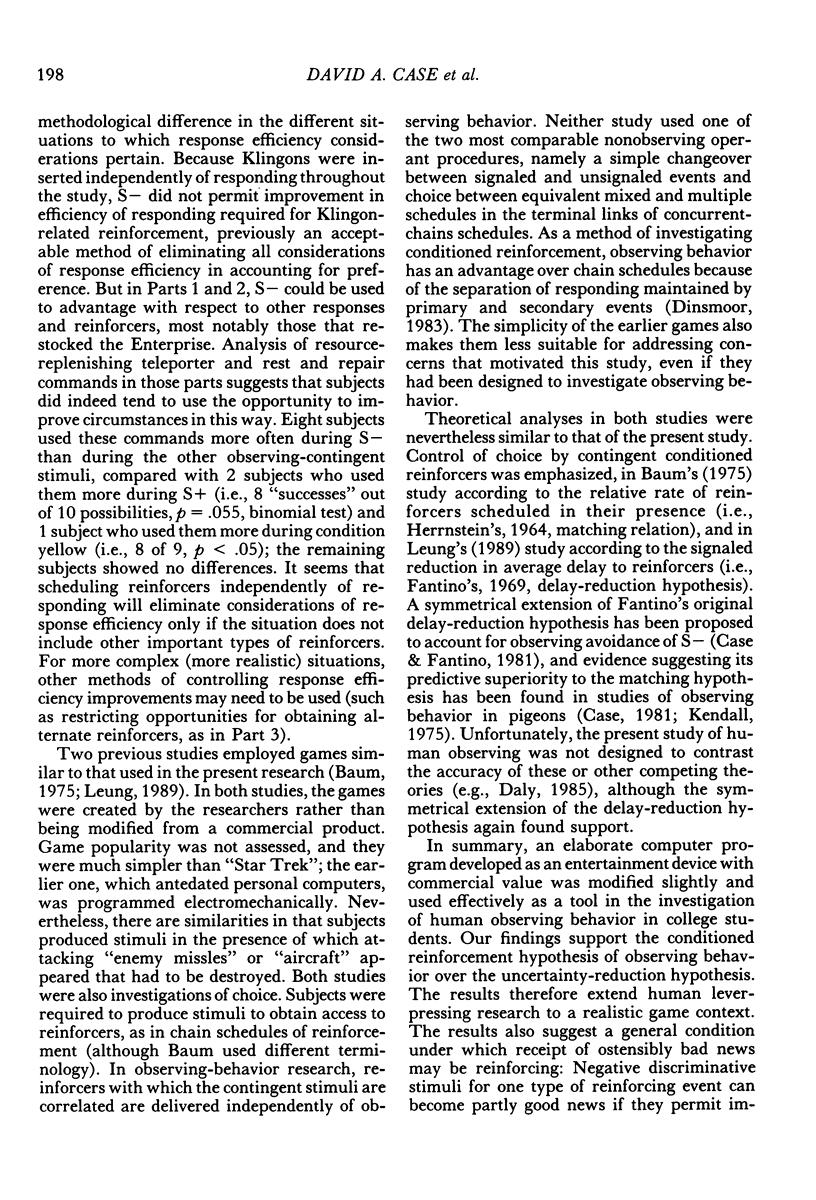
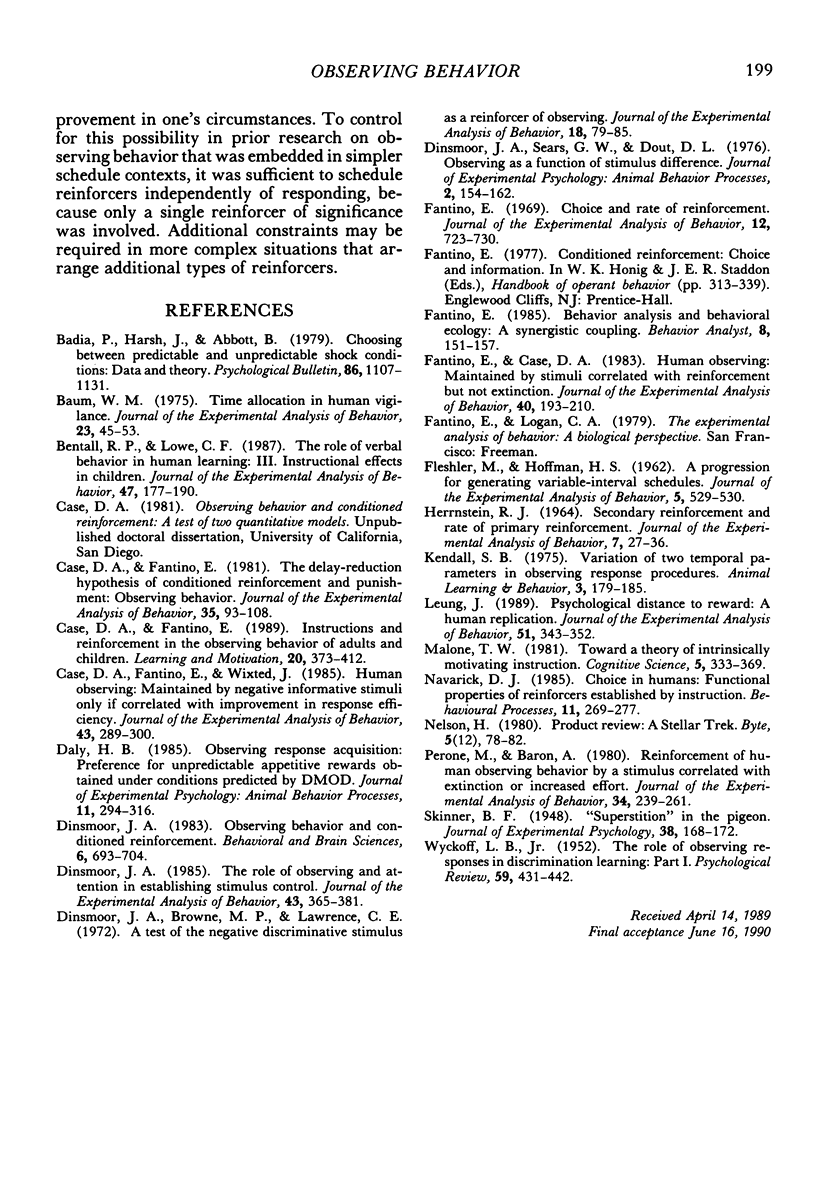
Selected References
These references are in PubMed. This may not be the complete list of references from this article.
- Baum W. M. Time allocation in human vigilance. J Exp Anal Behav. 1975 Jan;23(1):45–53. doi: 10.1901/jeab.1975.23-45. [DOI] [PMC free article] [PubMed] [Google Scholar]
- Bentall R. P., Lowe C. F. The role of verbal behavior in human learning: III. Instructional effects in children. J Exp Anal Behav. 1987 Mar;47(2):177–190. doi: 10.1901/jeab.1987.47-177. [DOI] [PMC free article] [PubMed] [Google Scholar]
- Case D. A., Fantino E. The delay-reduction hypothesis of conditioned reinforcement and punishment: Observing behavior. J Exp Anal Behav. 1981 Jan;35(1):93–108. doi: 10.1901/jeab.1981.35-93. [DOI] [PMC free article] [PubMed] [Google Scholar]
- Case D. A., Fantino E., Wixted J. Human observing: maintained by negative informative stimuli only if correlated with improvement in response efficiency. J Exp Anal Behav. 1985 May;43(3):289–300. doi: 10.1901/jeab.1985.43-289. [DOI] [PMC free article] [PubMed] [Google Scholar]
- Daly H. B. Observing response acquisition: preference for unpredictable appetitive rewards obtained under conditions predicted by DMOD. J Exp Psychol Anim Behav Process. 1985 Apr;11(2):294–316. doi: 10.1037//0097-7403.11.2.294. [DOI] [PubMed] [Google Scholar]
- Dinsmoor J. A., Browne M. P., Lawrence C. E. A test of the negative discriminative stimulus as a reinforcer of observing. J Exp Anal Behav. 1972 Jul;18(1):79–85. doi: 10.1901/jeab.1972.18-79. [DOI] [PMC free article] [PubMed] [Google Scholar]
- Dinsmoor J. A. The role of observing and attention in establishing stimulus control. J Exp Anal Behav. 1985 May;43(3):365–381. doi: 10.1901/jeab.1985.43-365. [DOI] [PMC free article] [PubMed] [Google Scholar]
- FLESHLER M., HOFFMAN H. S. A progression for generating variable-interval schedules. J Exp Anal Behav. 1962 Oct;5:529–530. doi: 10.1901/jeab.1962.5-529. [DOI] [PMC free article] [PubMed] [Google Scholar]
- Fantino E., Case D. A. Human observing: Maintained by stimuli correlated with reinforcement but not extinction. J Exp Anal Behav. 1983 Sep;40(2):193–210. doi: 10.1901/jeab.1983.40-193. [DOI] [PMC free article] [PubMed] [Google Scholar]
- Fantino E. Choice and rate of reinforcement. J Exp Anal Behav. 1969 Sep;12(5):723–730. doi: 10.1901/jeab.1969.12-723. [DOI] [PMC free article] [PubMed] [Google Scholar]
- HERRNSTEIN R. J. SECONDARY REINFORCEMENT AND RATE OF PRIMARY REINFORCEMENT. J Exp Anal Behav. 1964 Jan;7:27–36. doi: 10.1901/jeab.1964.7-27. [DOI] [PMC free article] [PubMed] [Google Scholar]
- Leung J. P. Psychological distance to reward: A human replication. J Exp Anal Behav. 1989 May;51(3):343–352. doi: 10.1901/jeab.1989.51-343. [DOI] [PMC free article] [PubMed] [Google Scholar]
- Perone M., Baron A. Reinforcement of human observing behavior by a stimulue correlated with extinction or increased effort. J Exp Anal Behav. 1980 Nov;34(3):239–261. doi: 10.1901/jeab.1980.34-239. [DOI] [PMC free article] [PubMed] [Google Scholar]
- WYCKOFF L. B., Jr The role of observing responses in discrimination learning. Psychol Rev. 1952 Nov;59(6):431–442. doi: 10.1037/h0053932. [DOI] [PubMed] [Google Scholar]


